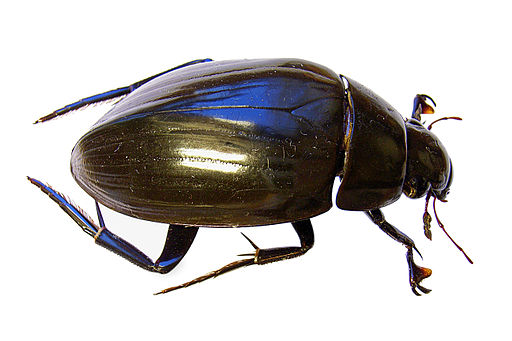Superregnum: Eukaryota
Regnum: Animalia
Subregnum: Eumetazoa
Cladus: Bilateria
Cladus: Nephrozoa
Cladus: Protostomia
Cladus: Ecdysozoa
Cladus: Panarthropoda
Phylum: Arthropoda
Subphylum: Hexapoda
Classis: Insecta
Cladus: Dicondylia
Subclassis: Pterygota
Cladus: Metapterygota
Infraclassis: Neoptera
Cladus: Eumetabola
Cladus: Endopterygota
Superordo: Coleopterida
Ordo: Coleoptera
Subordo: Polyphaga
Infraordo: Staphyliniformia
Superfamilia: Hydrophiloidea
Familia: Hydrophilidae
Subfamilia: Hydrophilinae
Tribus: Hydrophilini
Subtribus: Hydrophilina
Genus: Hydrophilus
Species: Hydrophilus piceus
Name
Hydrophilus piceus (Linnaeus, 1758)
Synonyms
Basionym: Dytiscus piceus Linnaeus, 1758
References
Primary references
Linnaeus, C. 1758. Systema Naturae per regna tria naturæ, secundum classes, ordines, genera, species, cum characteribus, differentiis, synonymis, locis, Tomus I. Editio decima, reformata. Holmiæ: impensis direct. Laurentii Salvii. i–ii, 1–824 pp DOI: 10.5962/bhl.title.542: 411. Reference page.
Links
Hydrophilus piceus Taxon details on Fauna Europaea
Hydrophilus piceus Linnaeus (Hydrophilidae) - atlas of beetles of Russia (scanography by Oleg Berlov)
ZooBank: F4CB04E4-DDAE-4E48-9E36-BB7CA0C57CD7
Vernacular names
Deutsch: Großer Kolbenwasserkäfer
eesti: Vesimardikas
magyar: Közönséges óriáscsibor
Nederlands: Grote spinnende watertor
polski: Kałużnica czarnozielona
svenska: Större vattenbagge
Hydrophilus piceus is a species of beetles in the family Hydrophilidae, the water scavenger beetles. This very large aquatic beetle is found in the Palearctic and is known by the common name great silver water beetle.[2]
Description
This beetle is among the largest aquatic insects. Adults can reach up to 5–5.15 cm (1.97–2.03 in) in length and 2.05 cm (0.81 in) in width.[3][2] The larvae is up to 7 cm (2.8 in) long. The body of adults is black with a greenish or olive sheen. It has protruding eyes and reddish-black antennae.[2]
Biology
Adult in flight (museum specimen)
Larvae
This beetle lives in aquatic environments. In some regions it can be found in lakes and ponds. In Greece it can be found in lagoons and estuaries. It has been found at elevations of up to 1,000 m (3,300 ft). In Great Britain it lives in ditches with thick vegetation in marshy areas.[2]
The beetle is omnivorous but favors plant material. It can live for up to 3 years but most individuals die after breeding during their first year. The larvae feed on freshwater snails of the family Lymnaeidae, drilling holes into the shells to feed on the animals. The grubs can then reach 7 centimeters long before pupating in the mud. In the spring, the adult female spins a cocoon, fills it with eggs, and sets it afloat.[2]
Distribution
This beetle is native to the western Palearctic realm, where it occurs throughout much of Eurasia, its distribution extending from Scandinavia to the Mediterranean, North Africa, and Russia, and as far east as India and China. Its distribution is not continuous because it has been extirpated from some areas; it is considered to be extinct in Norway and Luxembourg, for example. It is rare in some regions, being found only in specific and relictual habitat types.[2]
References
"Hydrophilus piceus Linnaeus, 1758". Biolib.cz. Retrieved May 7, 2012.
Karaouzas, I., et al. (2014). Contribution to knowledge of the distribution of the rare great silver water beetle Hydrophilus piceus (Linnaeus, 1758) (Coleoptera, Hydrophilidae) in Greece. Polish Journal of Entomology 83(2) 99–107.
G.C. McGavin (2010). Insects. p. 88. ISBN 978-1-4053-4997-0.
Retrieved from "http://en.wikipedia.org/"
All text is available under the terms of the GNU Free Documentation License


